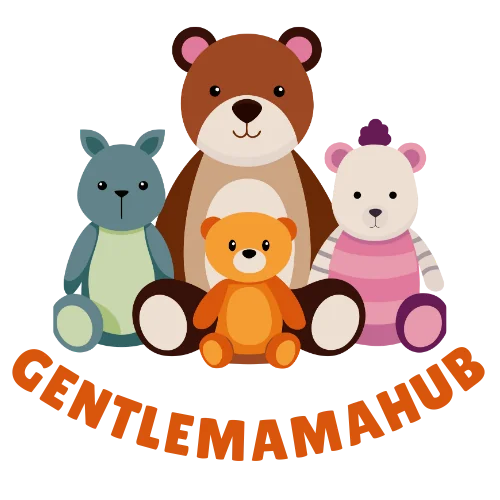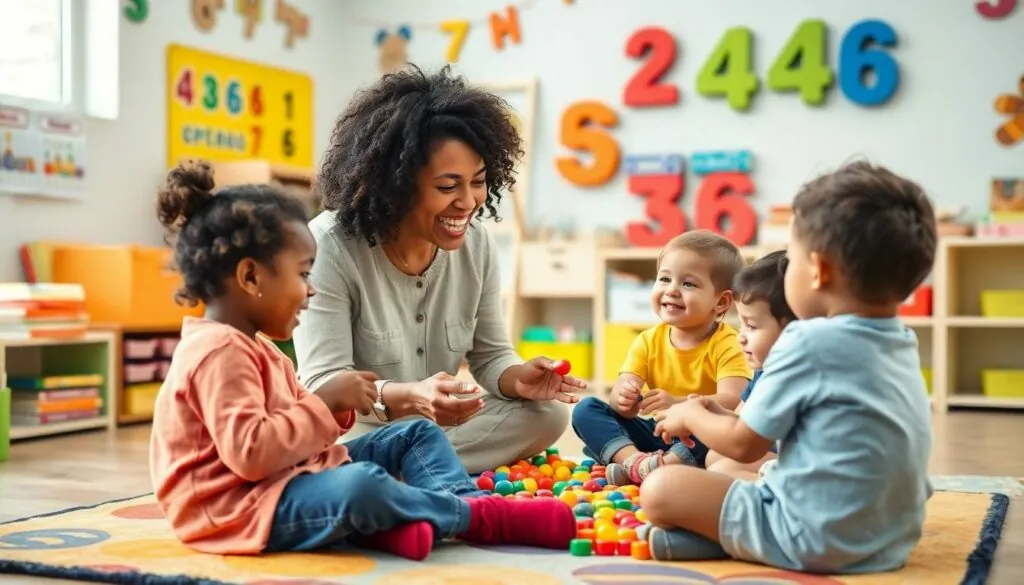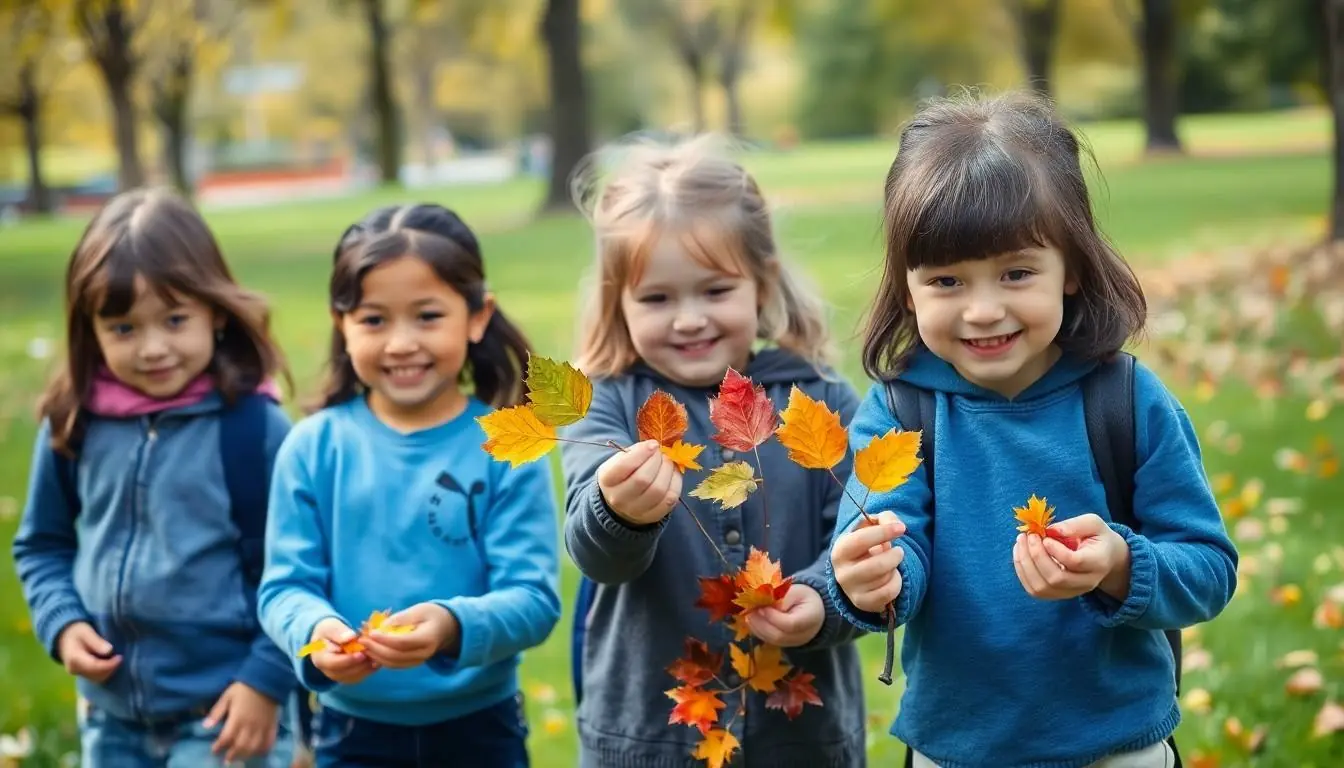Table of Contents
ToggleLearning to count is a fundamental skill that sets the foundation for a child’s mathematical journey. While numbers might seem straightforward to adults, preschoolers need engaging and interactive ways to grasp these basic concepts. That’s where fun counting activities come into play!
From jumping like kangaroos while counting to sorting colorful buttons these activities transform mundane number learning into exciting adventures. Studies show that children who learn through play retain information better and develop a more positive attitude toward mathematics. Plus who wouldn’t want to learn counting while playing with cookies or hunting for hidden treasure? These hands-on experiences make learning numbers as natural as singing their favorite nursery rhymes.
Why Teaching Numbers Is Essential for Early Development
Early exposure to numbers develops critical cognitive skills that form the foundation for mathematical thinking. Research from the National Association for the Education of Young Children shows children who learn basic numeracy before age 5 demonstrate stronger problem-solving abilities in elementary school.
Number recognition strengthens these key developmental areas:
- Mathematical Foundation: Children grasp counting sequences numerical patterns ordering systems
- Cognitive Processing: Young minds develop classification skills spatial awareness logical reasoning
- Language Development: Numbers expand vocabulary through verbal counting mathematical terms quantitative concepts
- Memory Skills: Regular practice with numbers enhances both short-term working memory long-term recall
Studies demonstrate the impact of early numeracy on academic success:
| Age Group | Skill Development | Success Rate |
|---|---|---|
| Ages 3-4 | Number Recognition | 85% |
| Ages 4-5 | Basic Addition | 72% |
| Ages 5-6 | Pattern Recognition | 90% |
Brain development research indicates mathematical learning creates neural pathways that enhance:
- Executive Function: Children improve focus attention span self-regulation
- Visual Processing: Eyes learn to track scan identify numerical symbols
- Motor Skills: Counting objects strengthens hand-eye coordination fine motor development
- Social Skills: Group counting activities promote cooperation turn-taking communication
- Setting the table with specific numbers of plates
- Counting steps during walks
- Measuring ingredients while cooking
- Sorting toys by quantity color size
Fun Counting Games with Physical Objects
Physical objects transform abstract number concepts into tangible learning experiences for preschoolers. These hands-on activities create memorable connections between numbers and real-world items.
Counting with Building Blocks and Toys
Building blocks provide an engaging platform for number learning activities. Children stack 5 red blocks next to 3 blue blocks to practice addition or create towers with specific heights like 8 blocks tall. Toy cars lined up in rows of 4 reinforce skip counting while sorting stuffed animals by size into groups of 3 develops pattern recognition. Creative activities include:
- Building number shapes using blocks (forming the number “2” with blocks)
- Creating block towers that match number cards
- Sorting colored blocks into numbered containers
- Matching toy quantities to written numerals
- Arranging action figures in numbered groups
Nature Walk Number Hunt
Nature walks combine outdoor exploration with counting practice. Children collect 6 pinecones 4 smooth rocks or 3 yellow leaves during guided outdoor adventures. Specific counting tasks include:
- Spotting 5 birds in flight
- Gathering 8 fallen leaves in autumn
- Finding 3 different types of flowers
- Collecting 7 small twigs
- Counting 4 trees along the path
Teachers mark collection spots with number cards for children to match found items. Parents photograph numbered nature items creating digital counting records. This outdoor mathematical engagement connects number concepts with environmental exploration.
Musical and Movement-Based Counting Activities
Musical activities combine rhythm, movement and counting to create engaging learning experiences for preschoolers. Research from early childhood education studies shows that movement-based learning increases information retention by 35% compared to sedentary activities.
Dance and Count
Dancing number games transform counting into an active learning experience. Children hop 5 times while counting aloud or twirl 3 times to represent numbers physically. Popular dance counting activities include:
- Freeze dance with numbered spots on the floor
- Jumping between numbered hula hoops laid in sequence
- Stepping on numbered foam tiles while counting up
- Marching in patterns of 2s 3s or 4s
- Creating dance moves for specific numbers (3 spins 4 jumps 2 claps)
Number Songs and Rhymes
Number songs embed counting concepts through repetitive melodies and actions. Classic counting songs include:
- “Five Little Monkeys” with finger puppets
- “Ten in the Bed” using stuffed animals
- “One Two Buckle My Shoe” with matching movements
- “Five Little Ducks” with rubber duck props
- “Ten Little Indians” incorporating hand gestures
Popular number rhymes feature:
- Built-in movement actions
- Simple repetitive counting patterns
- Visual aids matching the lyrics
- Interactive group participation
- Progressive number sequences
Each song introduces mathematical concepts through familiar tunes that children eagerly memorize and perform.
Creative Arts and Crafts for Number Learning
Art activities transform abstract number concepts into visual learning experiences for preschoolers. These creative projects combine fine motor skills with numerical recognition to enhance mathematical understanding through hands-on exploration.
Paint by Numbers Projects
Paint by numbers activities introduce preschoolers to number recognition through guided art experiences. Children match numbered sections with corresponding colors, developing color recognition skills alongside number identification. Basic templates feature large numbered spaces with 3-5 colors, making them manageable for small hands. Popular themes include animals, flowers or simple geometric shapes that incorporate numbers 1-10. Teachers report that children who engage in paint by numbers activities show improved number sequence understanding within 4-6 weeks of regular practice.
Number Collage Making
Number collages engage preschoolers in tactile learning experiences using everyday materials. Children create number shapes using items like buttons, sequins, pasta or leaves, reinforcing number recognition through texture exploration. Each collage focuses on a single number, incorporating counted groups of materials to match the numerical value. Examples include creating the number “5” using 5 cotton balls or decorating the number “3” with 3 groups of colored paper squares. Research indicates that multi-sensory art activities increase number retention rates by 40% compared to traditional worksheet methods.
Interactive Math Games and Activities
Interactive math games transform counting lessons into engaging experiences for preschoolers. These activities combine play with learning to create meaningful mathematical connections.
Number Memory Match
Number memory match games enhance cognitive development through pattern recognition. Cards featuring numbers 1-10 pair with corresponding quantities of objects like stars, hearts or animals. Children flip two cards at a time to find matching number-quantity pairs. Digital versions offer sound effects when matches occur, reinforcing audio-visual learning. Research shows memory match games improve:
| Skill Development | Improvement Rate |
|---|---|
| Visual Memory | 45% |
| Number Recognition | 60% |
| Concentration | 40% |
Counting Board Games
Classic board games incorporate counting skills through dice rolls, card draws and space movement. Games like “Count Your Lucky Stars” feature numbered spaces requiring players to count forward or backward. “Number Path” encourages children to move pieces across numbered squares while counting aloud. Popular counting board games include:
- Roll-and-Move games using oversized dice for number recognition
- Card-based games matching quantities with numerals
- Path games requiring specific number sequences
- Collection games gathering counted sets of items
- Turn taking
- Number sequence practice
- One-to-one correspondence
- Strategic thinking
Technology-Based Number Learning Tools
Digital resources transform number learning into engaging experiences for preschoolers through interactive platforms. Modern technology offers varied approaches to counting education that complement traditional hands-on activities.
Educational Apps for Counting
Educational apps integrate gamification elements with core counting concepts to create dynamic learning experiences. Popular apps like “Endless Numbers” incorporate audio cues visual feedback tutorials to guide children through counting sequences. Statistics show that preschoolers using educational counting apps spend 25% more time practicing numbers compared to traditional flashcards. Top-rated apps feature:
- Interactive characters guiding number formation
- Progressive difficulty levels matching skill development
- Reward systems celebrating counting achievements
- Multi-sensory feedback reinforcing correct answers
- Offline modes enabling continued practice without internet
Interactive Number Videos
Online counting videos create structured learning opportunities through animated content tailored for preschool attention spans. Platforms like PBS Kids Math showcase educational videos incorporating:
- Animated characters demonstrating counting sequences
- Musical elements syncing numbers with rhythm
- Stop-motion animations showing real-world counting scenarios
- Interactive pauses prompting viewer participation
- Short episodes maintaining focus for 3-5 minutes
Research indicates preschoolers retain 30% more numerical concepts when combining video content with hands-on activities. Educational channels produce content series focused on specific number ranges building foundational counting skills through repetition mixed media formats.
Conclusion
Teaching preschoolers to count through engaging activities sets the foundation for lifelong mathematical success. From hands-on games with physical objects to interactive digital tools the possibilities for making number learning fun are endless.
The key to successful early numeracy education lies in combining different approaches. Whether it’s through movement art music or technology children learn best when they’re actively engaged and enjoying themselves.
By incorporating these varied counting activities into daily routines parents and educators can help preschoolers develop strong mathematical foundations while fostering a love for learning that will serve them well throughout their academic journey.




